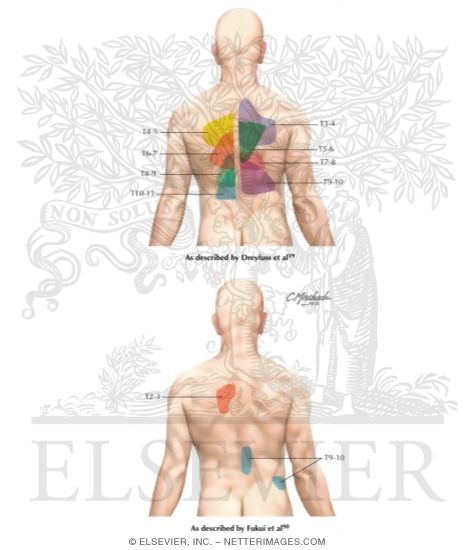
T6, T7 and T8 – These lead into your chest and abdomen.T3, T4 and T5 – These lead into the chest wall and help regulate breathing.T1 and T2 – These lead into nerves that go into the top of your chest and into the arms and hands.Before we touch on the symptoms, let’s explain where each one of these nerves traverses: Causes and Symptoms of Thoracic Spinal Nerve DamageĮach one of your spinal nerves controls different functions and sensations, so the symptoms you experience can vary based on the exact level of damage. In today’s blog, we take a closer look at the causes and treatment options for thoracic spinal nerve damage.

If any of these large nerve roots become compressed, irritated or damaged, pain and functional issues can develop. It’s also home to 12 nerve roots (T1-T12) on each side of your spine that run from the spinal cord and control functions and sensory signals in your abdomen, chest and upper back. Your thoracic spine is located in the middle of your back and consists of 12 vertebrae. These imaging tests allow your doctor to see how vertebra are aligned and identify soft tissue damage, tumors, growths or damage to your discs or ligaments.How To Treat Thoracic Spinal Nerve Damage Category: Spine | Author: Stefano Sinicropi | Date: May 10, 2021 Spinal stenosis can be diagnosed with a complete examination and imaging tests, such as X-ray, magnetic resonance imaging (MRI) or computerized tomography (CT) scan. How is thoracic spinal stenosis diagnosed? Your doctor will discuss which procedure is best for you: Today, there are many advances in surgical care to help address your spinal stenosis. Severe cases may immediately require surgery, particularly if your spinal stenosis is making it difficult to walk or control bowel or bladder movements. Generally, your doctor will only recommend surgery if a minimally-invasive approach does not improve pain or your quality of life. A therapist will work closely with you to develop exercises to do during therapy sessions and exercises you can do at home. Physical therapy for spinal stenosis can help strengthen your back and other parts of your body, and help you adapt every day activities to reduce painful symptoms. Closely follow your physician’s instructions and read all medication labels to ensure you are taking medicine safely and effectively. Your doctor may also discuss other pain relief options, including prescription medication, cortisone injections or nerve blocks. The goal of pain management is to help relieve your symptoms and alleviate your discomfort. That may include medication, physical therapy, minimally invasive treatments, and – in some cases – surgery. Your doctor will work closely with you to create a plan to help address your spinal stenosis. Treatment can help relieve pain caused by spinal stenosis in the middle back and improve your quality of life.

How is spinal stenosis in the middle back treated? Symptoms that interfere with your quality of life or persist over time should be evaluated by a spinal specialist to give you an accurate diagnosis and start a treatment plan that’s right for you. If you are experiencing a difficult time controlling body functions, contact your doctor immediately. Serious symptoms also include loss of bladder or bowel control.

This page discusses the symptoms, causes and treatment options for thoracic spinal stenosis, which affects vertebra from your neck to your abdomen. It can affect your upper (cervical) back, middle (thoracic) back or lower (lumbar) back. Spinal stenosis is a condition that describes a narrowing of your spinal canal.


 0 kommentar(er)
0 kommentar(er)
